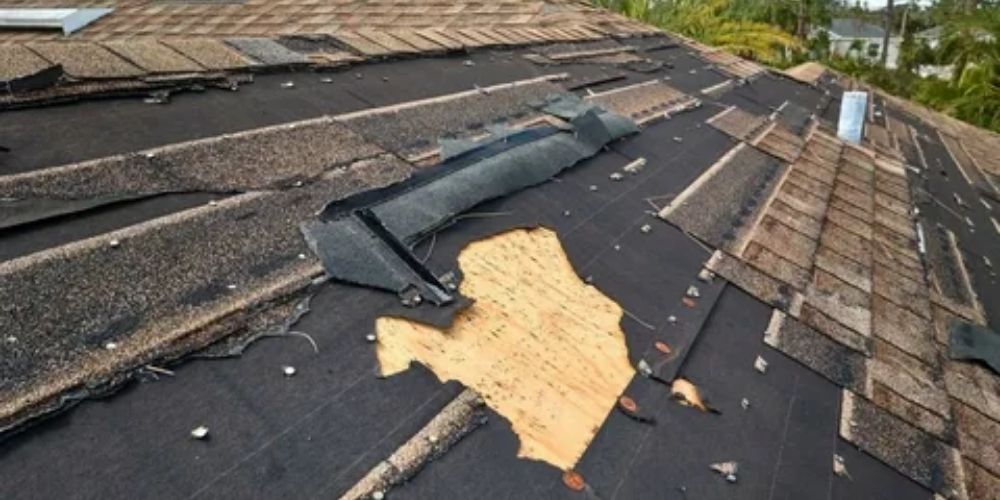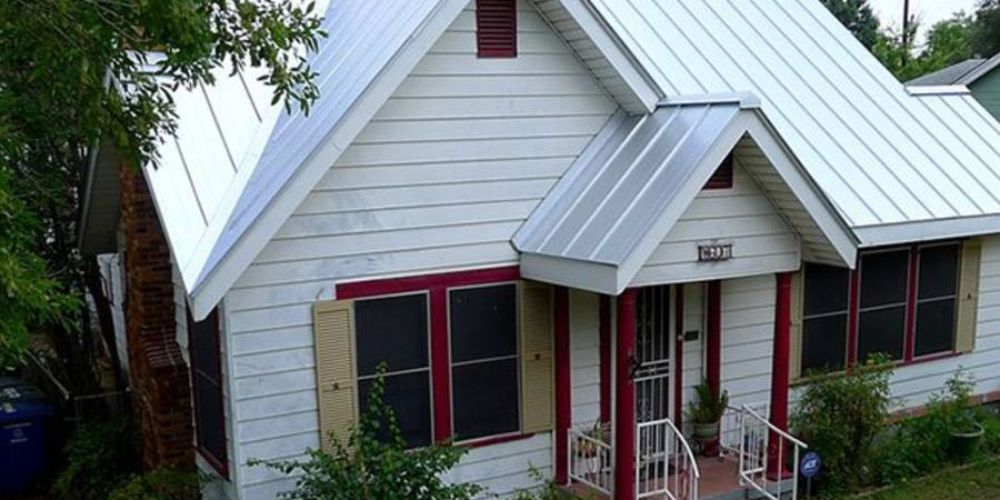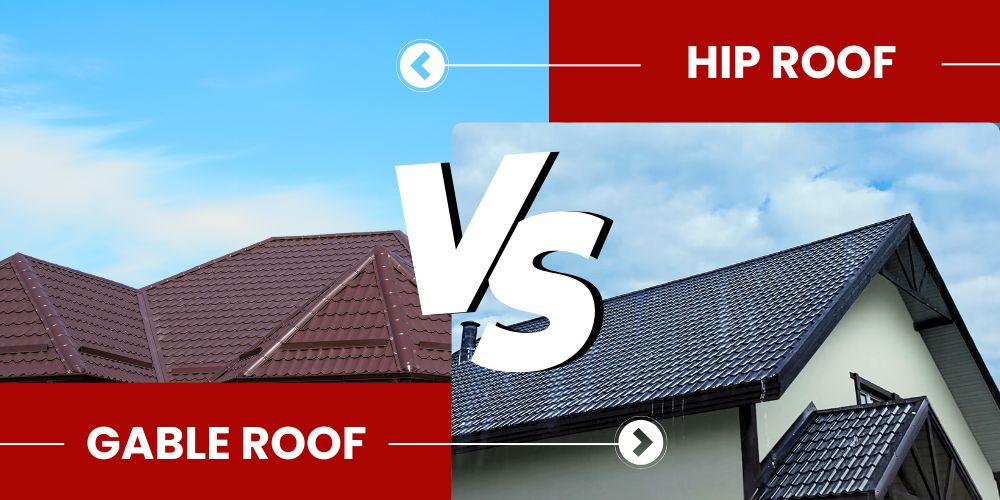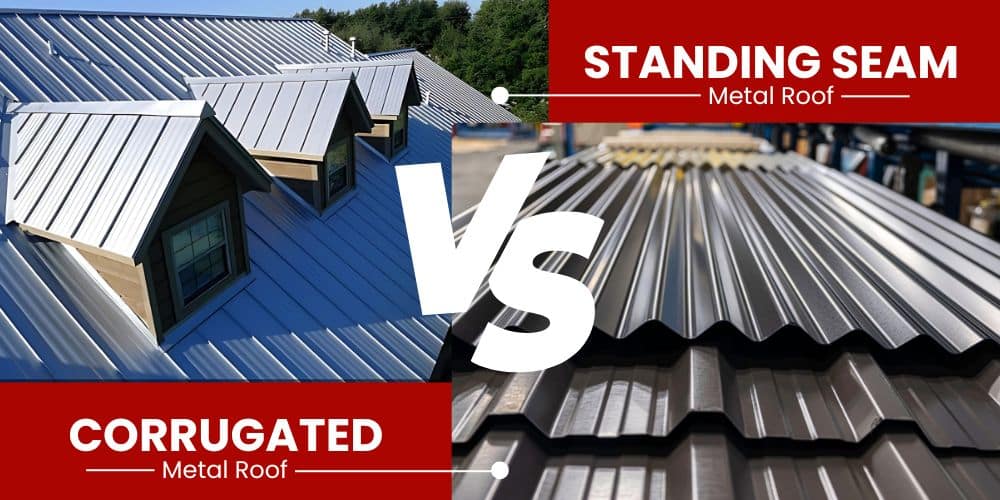When storms hit, your roof is the first line of defense, but damage isn’t always visible immediately. When you finally spot a problem, fixing it might cost a lot of money.
The good news is that your insurance might pay for it.
This easy guide will show you how to find storm damage on your roof and file an insurance claim without the hassle.
What is Roof Storm Damage?

Roof storm damage is what happens when bad weather hits your roof. Strong winds can rip off shingles, and hail can pound dents and holes into your roof. Small damage can quickly turn into big, expensive problems.
Here’s the good news: your roof damage insurance usually pays for storm repairs. You just need to file your claim fast after the storm hits.
Look for these warning signs after a storm.
- Missing or cracked shingles are easy to spot from the ground.
- Check your gutters for dents or damage.
- Inside your home, watch for water stains on ceilings or walls.
- Don’t forget to walk around your property. You might find shingle pieces, nails, or other roofing materials scattered in your yard.
These are clear signs your roof took a hit and needs attention.
Types of Roof Storm Damage Covered Under Insurance

Not all storm damage is treated the same by your insurer. Here’s a breakdown of the roof issues your home insurance typically covers after a storm hits.
1. Wind damage
Strong winds can rip off your shingles, tear away gutters, or mess up the metal pieces around your chimney and roof vents.
2. Hail impact
Those chunks of ice falling from the sky can crack your shingles, put dents in your roof, or even punch holes right through, which lets water sneak into your home.
3. Fallen tree limbs
When storms knock down big branches or whole trees right onto your roof, you’re usually covered for fixing that mess.
4. Rain damage from storm-created openings
If wind or hail punches holes in your roof and then rain pours through those openings, your insurance will usually pay for the water damage, too.
Note: Roof damage insurance coverage varies by policy and provider. Some have payment caps or separate deductibles for wind/hail claims. Review your coverage with your agent before storms hit.
Types of Roof Damage Not Covered by Insurance
Before you file a claim, make sure the damage qualifies. These are the types of roof damage your insurance likely won’t cover.
1. Wear and tear
Your roof ages over time, and insurance won’t cover normal wear. Shingles fade, little rocks wear off, and stuff slowly breaks down.
This slow damage is expected and part of owning a home.
You can also read: How to Easily Spot Roof Damage from Critters
2. Poor maintenance
If you skip cleaning gutters, ignore loose shingles, or let small problems turn into big ones, your insurance company will likely deny the claim, citing lack of maintenance.
Taking care of your roof is your job, not theirs.
3. Pre-existing damage
Insurance companies are pretty good at spotting damage that was already there before you made your claim.
If your roof had problems before the storm hit, don’t expect them to pay for fixing old stuff.
4. Damage due to manufacturer defects
When your roof materials are just bad from the factory, that’s between you and the company that made them.
Your insurance treats this like a broken product issue, not something they should pay for.
Also Read: Essential Guide to Understanding Roofing Warranties
When should you file a roof storm damage claim?
Don’t wait around if you think your roof got hit by a storm.
When to file a roof damage claim? The answer is simple – as soon as you spot any damage, even if it seems small.
Most insurers require prompt reporting—delaying could hurt your chances of claim approval. Take photos of any damage you see, even if you’re not sure it’s worth claiming yet.
If you start witnessing the signs of damage, instantly file the roof storm damage claim paperwork right away by calling your insurance company.
Understand Actual Cash Value (ACV) vs. Replacement Cost Value (RCV)
When dealing with roof storm damage, knowing the difference between ACV vs RCV can save you from payment surprises.
Actual Cash Value (ACV) pays you what your roof is worth right now, considering its age and condition.
Insurance companies calculate the roof replacement cost value, then subtract money for wear and tear over the years.
If your roof is 15 years old when it gets damaged, you’ll receive less money because the roof has already depreciated.
Replacement Cost Value (RCV) covers the complete cost of rebuilding your roof using current prices for materials and labor.
This option provides a much higher roof insurance payout since your roof’s age doesn’t reduce the amount you receive.
Most insurance policies work in two steps: they pay ACV immediately after your claim approval, then pay the remaining difference once you complete the actual repairs. This remaining amount is called recoverable depreciation.
Review your policy carefully to understand which coverage type you have before storm season arrives, so you can plan your budget accordingly.
Tips for a Successful Roof Damage Claim
Following these roof damage claim tips can significantly improve your chances of getting full coverage from your insurance company.
- Document everything immediately after storm damage occurs. Take detailed photos and videos showing all visible damage from multiple angles. Create a written record of when the storm happened and what you observed.
- Contact your insurance company quickly to report the claim. Most policies require prompt notification, and delays can complicate your case.
- Get professional inspections from qualified roofing contractors who understand how to get roof damage covered by insurance. They can identify hidden damage you might miss and provide detailed repair estimates.
- Keep all receipts for temporary repairs and related expenses.
- Follow up regularly with your adjuster and maintain organized records of all communications. This roof insurance advice helps ensure nothing falls through the cracks during the claims process.
Wrapping Up…
Dealing with roof storm damage is stressful, but your claim process doesn’t have to be. With the right steps and the right team, you can protect your home and your peace of mind.
Stephens Roofing and Remodeling has your back with expert inspections, honest guidance, and fast repairs.
When the storm passes, we’ll help you rebuild stronger.





